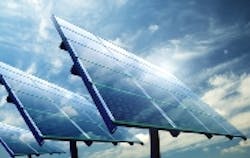Conserving resources using advanced laser technologies
Munich, Germany - Laser World of Photonics 2013 (May 13-16) and the World of Photonics Congress (May 12-16, 2013) at the Messe München trade-fair center will feature presentations and discussions on laser-based production processes that conserve resources.
For example, automakers are turning to carbon fiber-reinforced plastics (CFRP) to lighten autos and make them more fuel efficient. Mechanically cutting CRFP is very costly because tool wear is extremely high. A presentation at the Congress will examine the latest CRFP laser cutting techniques and application processes using nanosecond lasers to cut through carbon fibers with minimal impact on the edges and low heat dissipation.
Another topic discussed will be that of metals and thermoplastics that can be joined without mechanical joining elements or adhesives by first using a laser to create microstructures with undercuts in the metallic surface. A laser melts the surface of the plastic part which is pressed onto the metal. The plastic then flows into all of the microstructures that were created on the metal surface. Both parts interlock to create a strong, form-fitting bond.
Lasers can also weld copper conductors to aluminum or to other copper conductors as an alternative to ultrasonic or resistance welding to interconnect cells. Laser welding is a promising alternative to conventional methods such as crimping, arc welding, ultrasonic welding, and electron-beam welding. However, the base material’s high thermal conductivity and low absorption rates still represent a hurdle. Recent studies presented at the Congress show that high-power infrared lasers overcome these hurdles, making sufficient penetration depths and rapid production possible.
Heat-sensitive organic modules and copper indium gallium selenide (CIGS) cells can now be bonded using ultra-short pulsed lasers, which exhibit a low thermal impact.
The efficiency of solar cells can also be increased using lasers; a potential 0.3 to 0.5% efficiency increase in solar cell selective emitter technology has been reported. For example, if one were to switch to back-contacted cells, selective removal of passivation layers by laser could result in a considerable increase in efficiency.
A special presentation on "Photons in Production" will demonstrate the important role that lasers play in photovoltaics and "environment friendly" mobility. The techniques presented will include laser-based joining of lightweight materials, joining fiber-reinforced plastics and metals, plastic connections, joining and separating CFRP components and production of a drive battery for an automobile. The topic of lasers and energy will also be examined in the user forums on "Photovoltaics and Lasers" and "Photonics in Production: Smart bricks for e-mobility".
____
(Image via Shutterstock)
